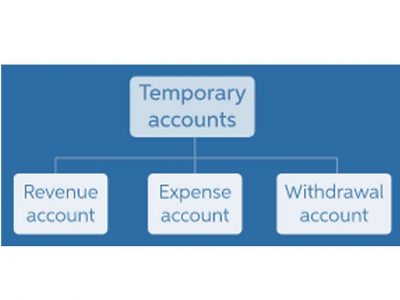Anyone seeking specific orthopaedic advice or assistance should consult his or her orthopaedic surgeon, or locate one in your area through the AAOS Find an Orthopaedist program on this website. Physical therapy will help your child gain muscle strength and improve range of motion in the affected limb and is often required for several weeks. In a radial deficiency, the hand is turned inward, giving it a club-like appearance, and the forearm may be shortened. By and large, linemen — especially tackles and edge rushers — have the longest arms in the NFL as they tend to be the biggest players on the field, with several over the 6’6″ range and 300+ pounds of aggression. As for quarterback, it’s not as massive of a talking point when compared to something like hand size.
Variables including age, height (cm), weight (kg), and sex were analyzed via multivariable linear regression analysis to generate equations to determine expected upper extremity length and circumference in healthy individuals. The parameters used to produce each equation are listed in Table 4, and a summary of the 8 equations with statistically significant parameters are listed in Table 5. This is just one of several measurements taken, including height, weight, arm span, and hand size. Athletic testing numbers are also conducted over the four-day event in Indianapolis, including the 40-yard sprint, vertical jump, broad jump, bench press, three-cone, and 20-yard shuttle. Arm length is the measurement of the arm from the tip of the middle finger of one arm stretched arm to another one. When you can’t determine the height of a patient, upper-arm circumference can help calculate his body mass index.
This second part will help you in getting additional measurements that will help you in getting a better overall fit. This is for the people who like super-fit and tight clothing or are very conscious about the fitting. Place the tape at the center back of your neck or shoulder-blade and guide the tape vertically to the center-point of your waist or to your required length. Measure from the edge of the left shoulder across the back of the neck continuing to the edge of the right shoulder.
The equations for the estimation of arm and forearm length and circumference provide more personalized estimates for normal limb size than the normative values previously reported in the literature. The determination of a child’s expected arm length was found to be dependent on height, age, and sex. On the contrary, the calculation of a child’s expected arm circumference depends on weight, age, and sex. The determination of a child’s expected forearm length depends on height, weight, and age, but is independent of his or her sex. The current study provides the first normal values for forearm circumference in the pediatric population.
Upper-arm circumference provides a general idea of BMI, but isn’t definitive. Taking two measurements of upper-arm circumference each time you measure and figuring according to the average of the two measures yields a more accurate reading. There are a number of reasons you might want to figure out your arm width. For example, what is arm length measurement you might need your arm width, along with other measurements like your arm length and collar size, to shop for fitted dress clothes. Or, maybe you’ve been hitting your biceps and triceps hard at the gym and want to track your arm grown. Either way, all it takes to measure your arm width is a flexible tailor’s tape measure.
The use of fingers below the tape-measure differs from person to person as some use one finger (index) while others use two. To simplify the process of getting your body measurements, that many find a tedious job, we have broken down this process into two parts. How long it takes your child to recover from surgery will depend upon the specific procedure performed. During recovery, your child will have regular follow-up visits with his or her doctor and x-rays will be taken to check the healing process of the affected bone.
- It is best to consider both reach and arm length to get a true idea of a fighter’s capacity.
- The most common and easily accessible method of measuring armspan uses the demi-span.
- First, you will want to start by making sure you have these tools needed to measure your arm length.
- For your wrist measurement, place the tape-measure around the circumference of your wrist.
Those with a longer arm length tend to prefer keeping a safe distance, throwing punches from far enough away to avoid getting punched. It is best to consider both reach and arm length to get a true idea of a fighter’s capacity. AAOS does not endorse any treatments, procedures, products, or physicians referenced herein. This information is provided as an educational service and is not intended to serve as medical advice.
How to Measure Arm Width
In this clinical photo, an external fixator is used to realign and lengthen the patient’s humerus (upper arm bone). A previous bone infection led to a fracture that healed incorrectly and caused shortening of the bone. If your doctor suspects that your child has a medical condition or syndrome, he or she may order additional testing to determine if other parts of the body are affected, such as the heart or kidneys. In many cases, the cause for a congenital limb length discrepancy is not known; doctors are simply not able to determine why it has occurred.
Arm Circumference Predictive Equation
Accurate measurements are essential for ensuring that clothing fits well, tracking progress in muscle development, and understanding an athlete’s reach. In this comprehensive guide, we’ll walk you through the step-by-step process of measure arms effectively. Additionally, we’ll explore the relevance of these measurements and provide insights into the importance of accurate data in different fields. The arm length measurement at the NFL Combine is done by measuring from the end of the bicep, or shoulder blade to the tip of the middle finger with the arm extended horizontally away from the body.
Because significant limb differences typically develop early on in pregnancy when a baby’s bones are being formed, some children with large differences in arm length may have other musculoskeletal problems, as well. Yes, arm measurements can be used by healthcare professionals to monitor conditions affecting the arms, such as edema or changes in muscle mass. When it comes to clothes the arm length is one of the most important measurements. After all sleeves that are too short or too long can be extremely uncomfortable and look quite bad. Fortunately measuring your arm length is relatively easy and only requires a few simple steps.
Arm span in sports
As long as you know which points to record, you can easily take the measurement without a seamstress or tailor. If possible, have a partner help you with these measurements to avoid an inaccurate reading. With the right positioning, you can finish measuring your arm length in a matter of minutes. Place the tape measure on one side of the fullest part of your upper arm.
Your doctor will order x-rays to confirm which bone is affected and to learn more about your child’s condition. Most children are able to adapt to small differences in arm length and function well without treatment. Children with large differences may need physical therapy, surgery, or other treatments to help them function better and be more independent.
Here you will learn not only how to get your body measurements but how and where to place the tape measure so you don’t get an inaccurate measurement, which happens to the best of us. If the limb length discrepancy is the result of a medical condition or syndrome, your child may have other musculoskeletal issues that require treatment, as well. Your medical team will continue to https://accounting-services.net/ address any concerns you may have and provide the ongoing support and treatment needed to help your child thrive. There are several surgical procedures used to treat upper limb length discrepancies. The procedure your doctor recommends—as well as the age at which the procedure is performed—will depend upon the cause and size of the discrepancy, as well as the type of surgery.
Instead, growth occurs at each end of the bone around the growth plate. When a child is fully grown, the growth plates harden into solid bone. Different clothing types may require specific measurement techniques, such as measuring sleeves differently for shirts, jackets, and coats. The average arm reach for MMA fighters varies, but it can impact performance by determining their striking range and the ability to keep opponents at a distance. Accurate arm length measurements ensure that clothing fits well, providing comfort and style.
It’s particularly important for tailored garments where precision is crucial. Take the tape down to the area just past your wrist bone for clothing measurement. A person may have longer arm length and shorter arm span because he or she may have a narrow shoulder. In the same way, a person may have shorter arm length but have a longer arm span because of a broad shoulder. The above is a good guide – but it doesn’t replace the measurements of a single child.



